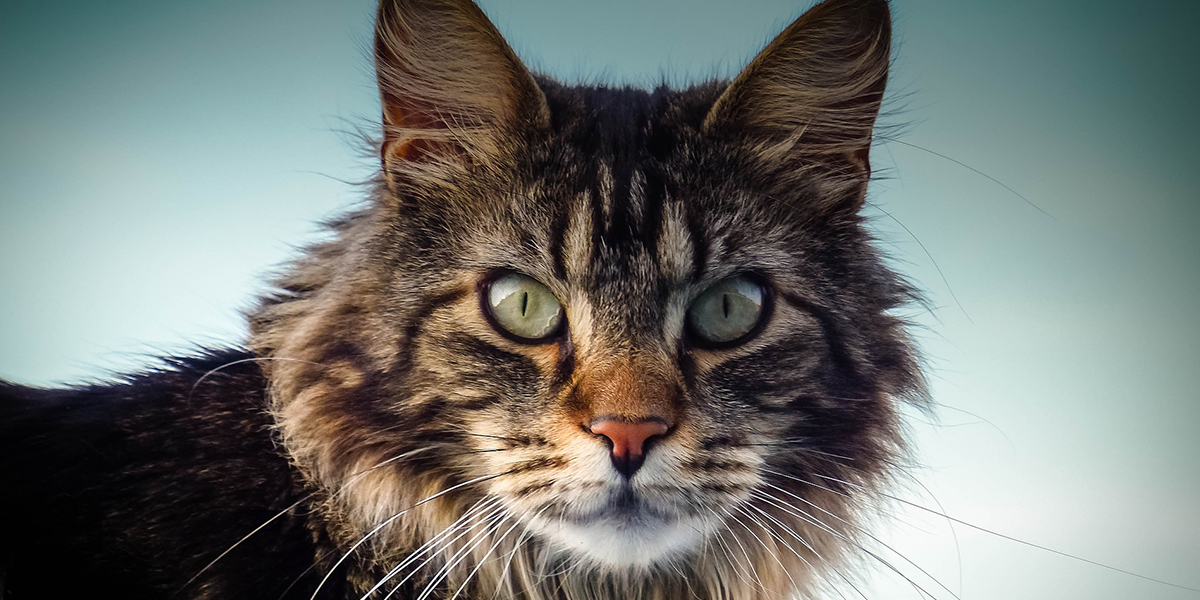Hypertrophic cardiomyopathy (HCM) is a condition characterised by thickening of the heart muscle (wall of the ventricles of the heart). This results in a reduced volume within the ventricles (major chambers of the heart), so reducing the volume of blood that the heart can pump with each contraction.
Hypertrophic cardiomyopathy is the most common form of heart disease in cats and can cause heart failure, thromboembolism, and occasionally sudden death in cats (see also Cardiomyopathy in cats).
Is HCM genetic?
Hypertrophy (thickening) of the ventricles can occur secondary to certain other diseases in cats (such as hyperthyroidism and hypertension), but most cases are idiopathic (i.e., have no obvious underlying cause) and are considered primary diseases of the heart itself.
The majority of cases of HCM in humans are recognised to have a genetic basis, with over 130 genetic mutations already identified that may cause or predispose an individual to development of the disease. It is now believed that many cases of HCM in cats may also have a genetic basis.
Specific genetic mutations have been identified in both the Maine Coon and Ragdoll breeds of cat. Mutations in the gene responsible for producing a particular protein in heart muscle cells – MYBPC3 (the cardiac myosin binding protein C gene) have been identified commonly in both Maine Coon and Ragdoll cats affected with HCM (a different mutation is present in the two breeds), and similar mutations may also be seen in some other breeds.
It appears that the presence of the defective gene increases the risk of a cat developing HCM. Genes are inherited in pairs, and if a cat has two defective (mutated) genes (called a homozygous cat) this increases the risk of HCM further compared with a cat that has just one defective gene (and one normal gene, a heterozygous cat).
These gene defects are common in Maine Coon and Ragdoll cats, with some studies showing up to 30-40% or more of cats carrying one or two defective genes. However, the relationship between the presence of the mutated gene and the development of HCM is not perfect. The gene defect appears to increase the risk of disease, but not all cats with the defect develop HCM and some cats in these breeds that develop HCM do not have these defects. It is likely that other (as yet unidentified) gene defects and other environmental and biological factors all influence the development of HCM.
Ultrasound testing of the heart to measure the thickness of the heart wall and to determine the presence of HCM is used along with the gene tests (which are available from a number of laboratories) to characterise cats. A further problem can be that some affected cats may not develop changes detectable on ultrasound examination of the heart until later in life, and some changes may be mild and subtle.
Using the gene test and ultrasound scanning
In breeds such as the Maine Coon and Ragdoll (where an important gene defect predisposing to HCM has been identified), it is recommended that cats should ideally be screened by ultrasound examination of the heart, and also have a blood sample/cheek swab taken. Samples are then sent to a specialist veterinary laboratory to determine the genetic status of the cat. It is recommended that:
- Cats clinically affected with HCM on the basis of an ultrasound scan should not be bred from
- Any cat with a positive gene test that is homozygous for the defect (has two abnormal genes) should not be bred from as they will always pass on the abnormality to their offspring
- Careful consideration needs to be taken in breeding from cats that are heterozygous positive on the gene test (have one normal gene and one mutated gene). These cats will inevitably pass on the defect to a proportion of their kittens
When selecting cats for breeding, there are many different considerations to take into account. The high prevalence of both clinical disease and the gene defect in breeds such as the Maine Coon and Ragdoll means that great care must be taken to try to reduce the frequency of the gene defect in these breeds and so reduce the risks of HCM developing.
HCM can occur at any age and therefore a single normal echocardiogram (ultrasound examination of the heart) does not guarantee that the cat will remain free of the disease. Cardiologists recommend that breeding cats should have an annual echocardiogram during their breeding years. Examining retired cats periodically is also advantageous as this may allow the identification of affected cats that have offspring in a breeding program.
In some countries, registers of breeding cats have been established so that the genetic status of breeding stock is recorded along with results of ultrasound scanning by a veterinary cardiologist. This information then allows more careful selection of suitable breeding cats.
International Cat Care believe that wherever registers of gene tests in cats are kept, these should always be linked to a means of permanently and readily identifying the tested cat – ie, an internationally recognised microchip identifying number.
There is ongoing work looking for further mutations that may contribute to HCM in Maine Coon and Ragdoll cats, along with other breeds such as the Norwegian Forest Cat and the Sphynx where a higher prevalence of HCM has been reported or suggested.
Thank you for visiting our website, we hope you have found our information useful.
All our advice is freely accessible to everyone, wherever you are in the world. However, as a charity, we need your support to enable us to keep delivering high quality and up to date information for everyone. Please consider making a contribution, big or small, to keep our content free, accurate and relevant.
Support International Cat Care from as little £3
Thank you.
Donate Now


